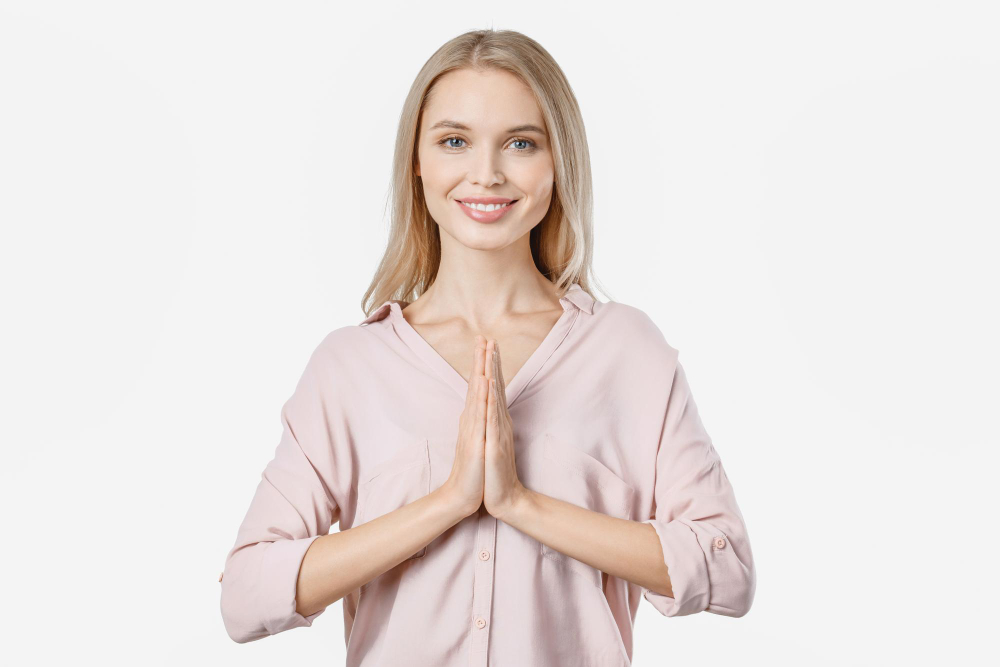Yoga - a philosophy of life or a body-strengthening workout?

Yoga is a system of spiritual and physical exercise that originated in India many thousands of years ago. The primary goal of its practice is to achieve harmony between the soul, body and mind. Practicing yoga can contribute to mental and physical balance, as well as improve many health parameters.
Exactly what benefits can come from practicing yoga regularly? How to start practicing it and is yoga a discipline for everyone?
A historical overview of yoga
It is difficult to determine clearly when yoga originated. The oldest sources report that it was practiced in India as early as 3300-1300 B.C. However, it can be assumed that its origins go back even further...
Yoga philosophy has evolved over millennia, and Patanjali, who lived around the 2nd century B.C. and is considered the father of classical yoga, also created one of the most important treatises on the philosophy, known as the yogasutra.
The work contains 195 sutras, or short aphorisms and phrases, and 1161 words, divided into four chapters. Each part of the yogasutra was intended to define yoga and explain how to practice it to achieve liberation. Indeed, at the time, the purpose of practicing yoga was to gain the power of the gods by performing exercises that were difficult for the body.
Since the 2nd century A.D., the practice has evolved, spreading around the world.
The West discovered India in the 14th century. At the time, the practice of yoga was attributed to the Hindu faith and was considered a pagan practice. Thus, until the end of the 19th century, its practice was forbidden.
One of the most important modern yoga masters is considered to be Swami Vivekananda, who at the end of the 19th century made people aware of what the practice of yoga really is and the benefits it can bring.
In the 20th and 21st centuries, yoga has become a fashionable practice among people. New styles also began to appear, adapted to particular societies and their beliefs. In Poland, yoga is mostly known in the form of Hatha yoga, although there are other styles of practicing this philosophy as well.
What is yoga?
Yoga is a philosophy of life that is difficult to clearly define. It can be assumed to be a set of exercises, called postures or asanas, which are combined with meditation and breathing techniques. Its goal is to unify the body into a coherent whole - both soul, body and mind.
Since "asana" freely translated means "comfortable position," any yoga position is considered optimal and suitable for achieving balance and well-being.
Yoga is not a typical sport discipline, but rather a system of exercises that can affect the physical and mental development of a person.
Types of yoga
There are many different types of yoga, popular forms of the philosophy include:
- Hatha Yoga - the most common form of yoga in the West. It involves combining and holding asana positions while concentrating on the breath. Relaxation is also an important part of hatha yoga. The purpose of its use is to improve body flexibility and reduce excessive tension and stress.
- Kundalini Yoga - is a type of yoga that allows you to harmonize energy centers. Focuses on practicing asana positions, breathing, meditation and relaxation. The purpose of its use is to relieve daily stress and improve physical and mental balance.
- Iyengar Yoga - a relaxed approach to exercise, in which various types of equipment can also be used. Designed for beginners, it can support physical and spiritual development.
- Yoga Nidra - is a head practice that involves lying down and listening to the voice of the instructor. It does not shape the body, however, it allows the body to relax. It can soothe nerves and help you calm down.
- Bikram Yoga - a dynamic style of yoga that is practiced at a temperature of about 40°C. It consists of 26 hatha yoga asanas. The high temperature of the practice is expected to make the body more flexible and reduce existing tensions.
These are just some of the existing types of yoga. There are also practices known as Vinyasa yoga, Ashtanga Vinyasa yoga, Yin Yoga or prenatal yoga.
Each type of yoga is slightly different from the other forms of yoga and can affect the human body differently.
Recommended products
Why is yoga worth practicing?
Yoga, like any physical activity performed on a regular basis, can have the effect of improving performance and fitness, increasing flexibility and limberness of the body, as well as gaining strength. At the same time, yoga can stretch muscles and tendons and strengthen joints. It can also promote good posture and benefit the spine. Performing intense yoga sequences can also support the building of muscle mass.
Practicing yoga can reduce stress levels, relax and unwind the body. It can also increase the awareness of one's own breath and stimulate metabolism and support body shaping.
Morning yoga can motivate you and give your body the energy it needs to perform daily activities. In turn, yoga practiced in the evening can reduce fatigue after a whole day, reduce tensions in the body and help relax the whole body, and thus positively affect the quality of sleep.
Practicing yoga can also improve blood flow and have a positive effect on oxygenation of the body. Regular exercise can strengthen immunity, improve digestive function and reduce pain in various parts of the body. Some exercises can also stretch and relax the pelvis, and thus yoga can relieve menstrual pain.
Does yoga affect weight reduction?
Practicing yoga can stretch the body, strengthen and shape the figure, as well as accelerate metabolism. Depending on the exercise technique chosen and the duration of the exercise, the body can burn from 150 to as much as 500 kcal.
Therefore, combining yoga with a healthy lifestyle and a balanced diet can help reduce weight. However, it is worth remembering that weight loss is not the goal of practicing yoga, but only a "side effect".
Who can practice yoga?
Yoga is a practice that can be done by almost anyone, as long as there are no health restrictions.
Both young and old can practice yoga. This practice is suitable for people of all ages.
Contraindications to practicing asanas may include osteoporosis, musculoskeletal disorders or balance disorders, although even in these situations it is worth consulting a doctor to confirm the risks of practicing yoga.
It is worth remembering to perform the positions and asanas to the best of your ability. Improper performance of exercises or excessive exploitation of your own body can contribute to the occurrence of negative health effects.
How to start practicing yoga?
If you want to start practicing yoga, half of the success is already behind you. You have finally shown your willingness and interest. Now dress comfortably and take off your shoes.
You can take advantage of the residential courses available in many cities, which are held in the company of certified instructors. You can also practice yoga at home together with an online course or instructional videos from youtube.
Yoga practiced at home can be safe if you start with basic asanas and carefully follow the directions of the instructor.
Before starting your practice, it's a good idea to find a convenient place where you can calm down and perform the various movements and positions without restraint, and fully focus on the exercises and breathing.
The essential equipment of every yogi
Yoga does not require much expensive equipment. However an exercise mat may be useful to start the practice. Well-chosen allows you to increase the safety and comfort of your practice.
The mat should be non-slip, durable and thick enough to cushion the body and joints. It is also worth paying attention to its length, it should be adjusted to the height of the practitioner so that it covers the entire body, regardless of the position performed.
Clothing and footwear, or rather the lack thereof, are also important. The right outfit for yoga is one in which you will be comfortable. The most common choice among ladies is leggings and a sports bra and T-shirt, while among men a comfortable tracksuit. Yoga is worth practicing barefoot, as it has a positive effect on grip. In addition, the feet are also actively worked during yoga.
Are any other equipment needed?
At the very beginning of your yoga adventure, it is a good idea to focus on performing particular positions on the mat. Over time, you will see for yourself whether you need additional equipment to practice yoga.
Among the accessories often used among yogis are:
- yoga cubes that can make it easier to perform individual asanas,
- yoga rollers, which can provide adequate support for the body, make the exercises more comfortable and reduce the risk of injury,
- meditation cushions that can support the maintenance of a correct and comfortable body position,
- eye bags, which during yoga nidra can be helpful to relax and disconnect from the outside world,
- yoga straps that can be useful for back and leg stretching poses, as well as when you can't reach your foot during an asana.
However, it is worth remembering that practicing yoga is not about using a variety of equipment, but about achieving unity and harmony of body, soul and psyche. In addition, yoga can improve fitness and well-being, regardless of whether it is performed with the help of specialized equipment or not.
Any accessory can increase the intensity of the asanas, as well as positively affect the comfort of the practitioner.

